Moonshooters
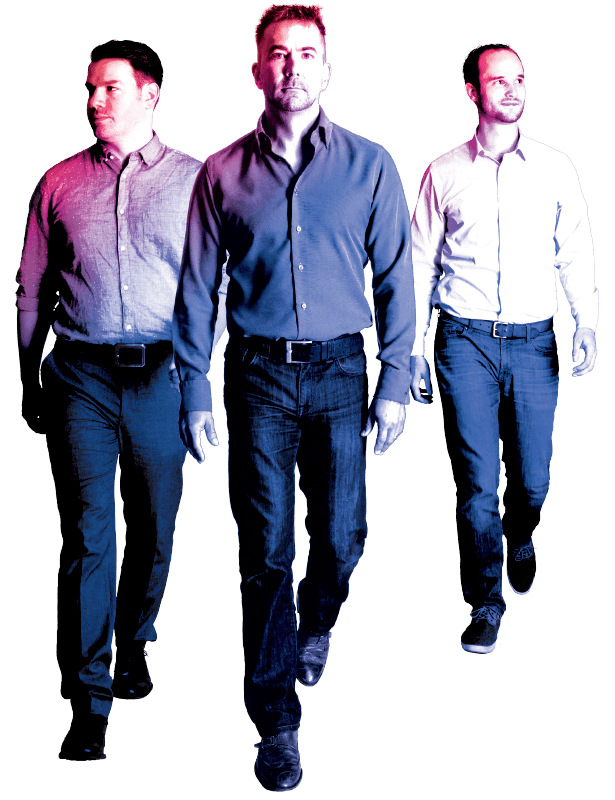
Rare are the breeds that house an innate obligation to go against the grain, to take risks, to create new perspectives and to disrupt accepted norms. They aren’t shooting for the top: they’re shooting for the moon.
As far back as human history goes, there have been those whose innovation has undeniably changed the world. From the simple wheel, to the printing press, to electricity, to the Internet to the iPhone — we’ve come a long way. There’s no arguing that the ingenuity of a few has changed the trajectory of the world as we know it, and all of these revolutionary disruptions started at one point as a moonshot.
Make no mistake: moonshots are dangerous — much akin to the turbulent plight of space missions in the ‘50s and ‘60s. Before the famous Luna 2 landing in September 1959, there were many failures. But when lunar impact was finally made, everything that was only previously imagined became reality.
Speaking of moonshots in a business context, Ray DePaul, director of Mount Royal’s Institute for Innovation and Entrepreneurship, says, “A moonshot targets making a 10-times improvement rather than simply a 10 per cent improvement.” DePaul was part of a moonshot that would become BlackBerry, one of Canada’s most successful tech ventures.
“Google popularized the term and has embarked on a series of moonshots, including the autonomous vehicle, balloons that will bring the Internet to the entire world and contact lenses with an embedded glucose sensor for diabetes,” says DePaul.
Clayton Christensen, a Harvard Business School professor, initiated and popularized the notion of disruption in business with his 1997 book, The Innovator’s Dilemma, by separating technologies into two groups: sustaining —those that make incremental improvements on something existing, and disruptive — those that provide an entirely new or different value proposition.
If you look around, you’ll see systems, infrastructure, products and processes all existing in a certain way. And in many cases, it’s simply because that’s the way it’s always been done. Although not every moonshot aims to have the intergalactic impact of the Hubble Space Telescope, these entrepreneurial Mount Royal alumni see opportunity in challenging the status quo, have their eyes to the sky and are not afraid to take their shots.
The Launch
Buckle your seatbelt. It’s always a bumpy ride as the weight of the risk involved in the launch of a new venture sets in. Resources are stretched thin — personal, financial and otherwise — but hopefully the right corners have been cut to keep it lean. Weeks, months, maybe even years are invested leading up to this day, and feeling like David staring down Goliath, thrusters are cued, lucky stars are picked and the switch is flipped.
Recent Bachelor of Business Administration (BBA) grad Stephen Neish, along with his partners, helicopter pilots, Rob Rotzetter and Rob Neish (Stephen’s cousin) recently propelled AccuEye Aerial Surveys (AS) into the market. The pair of pilots felt that the skills they learned on the job and in the classroom could expand the atmosphere of traditional aviation services and create disruption in their own industry. They partnered with Neish to develop a business that could ultimately render their current careers obsolete.
Neish is capitalizing on his Mount Royal education and previous sales and entrepreneurship experience to develop a business model that could help to provide buoyancy to an ailing oil and gas industry with a prudent and safe alternative to manned aerial pipeline monitoring. The trio is also eyeing market share in aerial surveying in the real estate, agriculture, resource sector, firefighting and search and rescue industries.
Stephen Neish
co-creator of AccuEye AS
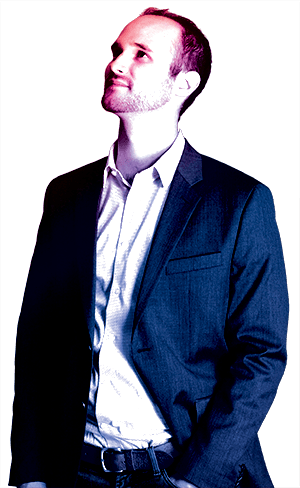
3 hours of flight time travelling at 80 km/h
10 foot wingspan and 5 foot length
Covers up to 18.5 square kilometres (4500 acres) in a single flight
42.4MP, 35mm,
Exmor R CMOS sensor
Provides 327,680 pixels of dynamic thermal imaging
Capable of operating in wind speeds up to 80 km/h
Enter the drone ...
The (currently part-time) venture for AccuEye AS is a new business assembled around a custom-built umanned aerial vehicle (UAV) equipped with optical and thermal sensors, and guided by GPS waypoints over pre-programmed routes that can cover 18.5 square kilometres (4,500 acres) in a single flight. The value proposition for AccuEye AS is that the UAV is manned by trained pilots on the ground. It is a much safer and more cost-effective alternative in a highly regulated arena.
While commercial applications for drones are still in their infancy, recreational “droners” are testing the limits and driving regulatory development. With safety at the forefront of Transport Canada’s agenda, commercial drone applications are still working to carve out their niche. This has led the AccuEye AS team to eye opportunities abroad in the meantime.
For Neish, the entrepreneurship classes he took as part of his General Education requirements for his BBA were inspirational to his risk-taking spirit, and caused disruption in his own educational pursuits.
“From then on I knew I could no longer be an accountant.”
Neish continues to push AccuEye AS into orbit, as it is, at the moment, still in its early stages.
“Currently, working to get AccuEye AS off the ground is sort of my hobby,” explains Neish of his startup. ”But my dream job is to make my living from my hobby.”
Breaking into orbit
With the first 100 kilometres down, the launchpad is still in sight but the atmosphere is getting thinner. The blackness of space blots out the blue skies and the risks of gravitational pull causing a crash and burn is dissipating. Ground control, watching the progress, starts to appreciate the viability of the endeavour and offers its support.
For alumnus Andrew Browne, Mount Royal’s entrepreneurship offerings were the then unbeknownst takeoff point for his tech startup TikTiks — an app positioned to disrupt the secondary ticketing market as we know it.
As Browne progressed through his BBA, his electives began to be populated with entrepreneurship classes. He recalls the turning point in his career aspirations as the Society, Innovation and Enterprise class he took (which he still is able to remember the 3370 course code for), which caused him to declare entrepreneurship as his official minor.
“The class changed the way I looked at university. It expanded my thoughts and my mind and created opportunities for me,” says Browne.
“I met Ray DePaul in my final year, who got me into the Student Entrepreneur in Residence role. That evolved into a part-time job with Startup Calgary that eventually started consuming my spare time. At one of the 90-plus events we held over that year was where I met Johnny.”
Browne and his business partner Johnny Tran became acquainted at a Startup Calgary event (circa 2013). They instantly bonded over mutual passions for technology and the Calgary Flames. The duo later became a trio when Brendan Koch, Mount Royal alumnus of the Bachelor of Computer Information Systems program, came on as chief technology officer.
“In talking to Johnny, it came out that he was a long-time season ticket holder and had started a Facebook group to connect season ticket holders with Flames fans to resell tickets,” explains Browne.
“After monitoring the activity and how people interacted through the group, we figured we could build something simple that did the same thing, but allowed users to complete the transaction securely.”
For newbies to the ticketing arena, this is where things get a bit complicated. The secondary ticket market — estimated to be worth billions in North America alone — is an unintended function of how tickets flow between the value creator, such as the sports franchise or performer, to the ultimate “bum-in-seat” fan attending the event.
According to a new report from Technavio, the market is expected to grow in value by $8.94 billion from 2015 to 2020, to reach a total value of $15.19 billion.
Over the last 10 years, ticket brokering has evolved from scalpers lurking outside stadiums to multimillion-dollar businesses that buy and sit on a massive ticket inventory until the optimal time to sell. This thorn in the market’s side starts with Ticketmaster, which has masterfully captured the primary market share over the past 25 years by creating contracts with clients that solidly places it as the sole gatekeeper to events. This relationship created the secondary market.
Ticketmaster pays the value creators up front for the tickets. But they have no interest in sitting on their inventory as do those in the often unfair secondary market. So, they sell tickets to fans and corporations, but also to ticket brokers whose business relies on holding on to inventory until they can sell for a markup. What most people don’t realize is that between 25 to 50 per cent of all tickets sold for live events are resold multiple times before they are used. None of the revenue or transactional data is made available to the true value creators: teams, leagues, venues and artists.
TikTiks creates a social ticketing marketplace that works like an escrow service. It allows sports fans to exchange tickets without the burden of listing through free online classifieds — like Kijiji — and having to arrange in-person meetings, or risk a digital transaction, or pay excessive fees to post them on for-profit ticketing sites. With TikTiks, those selling at or below face value incur no charge, and nominal fees are charged to the buyer, creating transactional revenue.
If you and your friends make a last-minute decision to go watch a game, you can buy five tickets at 3 p.m. for the game at 7 p.m. through the TikTiks app. You can pay the seller, send the tickets to your friends and collect their money all through your smartphone.
Sayonara printed tickets.
Inherently disruptive to the existing ticketing market, while also finding its place within it, TikTiks addresses a current gap in data collection that is lost in the ether of the secondary market. Fewer than one in 10 of the people who show up actually purchased from the primary market and provided the data that created their customer profile.
By having a platform that incorporates user profiles, TikTiks can effectively track the flow of tickets from the original sale to the actual seat occupant at the event. This creates an additional revenue stream for TikTiks as brokers and value creators are willing to pay for accurate customer data.
TikTiks recently moved out of Assembly Coworking Space in Kensington, and is now co-located with development partner Aquanode Interactive in Calgary’s northeast.
As TikTiks 2.0 is set to launch this fall, the company is setting a lofty goal of growing its current 3,000 users to 100,000, with $1 million in ticket transactions. This quest for success comes with new grant funding and a commendable tranche of private investment, achieved in part through the credibility and resources brought to their advisory board by Mount Royal’s DePaul and adjunct professor Evan Hu.
By tying ticketing to the fan experience, TikTiks has started to explore other value-added roles of the app, including partnering with local bars and restaurants to incentivize transactions and creating the ability for corporate ticket holders to track the dispersion of tickets to realize writeoffs and ultimately reconnect the value creator with the fan.
“Sure, it’s a moonshot. So, there is no right or wrong,” says Browne.
“But, I see opportunity in everything and I think that defines entrepreneurs. Instead of sitting around ‘waiting until oil goes back up,’ I see huge opportunity for us as Albertans to build the world we want to live in.”
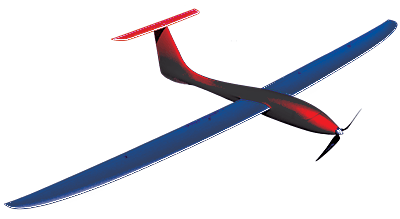
Brendan Koch
chief technology officer at TikTiks
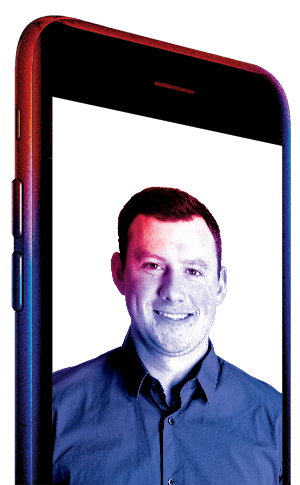
Creating societal impact
The stars have aligned. The landing was a success. A flag bearing a business logo now sits firmly planted on the lunar surface for all to see. It’s a great view.
Broadcasting diploma alumnus and local start-up veteran Garth Johnson is no stranger to moonshots, having been part of a couple notable undertakings that made it — big time. He was a member of the team that built iStock Photo in 2005 before its sale to Getty Images in early 2006 for $50 million US.
“iStock Photo was all about disruption,” says Johnson.
“We grew the company from $12 million to $200 million-plus over a couple years. There was an existing market for stock photography, which was very highly priced by the sellers, and restrictive for artists to get into. My colleague and I always said, ‘We democratized photography.’ And, lots of people in industry even said publicly we would never make it and wouldn’t survive. We literally turned that industry on its head.”
After the sale to Getty, Johnson wasn’t done with the stock photo business and bought into, and became a part of, a competitor at the time, Fotolia, which went on to be purchased by Adobe in a $800 million US all-cash deal in late 2014.
Johnson says he developed his unique approach through the television writing and production, copy editing and market research skills learned during his days at what was then Mount Royal College. He credits his instructors at the time, Darrel Janz, Paul Dunphy and Gail Montgomery, for the real-life, hands-on experience they brought to the classroom.
After graduation Johnson went on to pay his dues in a small market in a northern British Columbia television studio, where the jack-of-all-trades nature of the work helped shape his character as an entrepreneur.
“In terms of what I’m trying to do now, it’s just a continuation of my whole career path. I’ve always been a self-starter. I enjoy making things, creating things, building things and doing it my own way. This new venture is the first in 15 years outside of media.”
Johnson’s latest undertaking, Meticulon, is a social moonshot aimed at disrupting common misconceptions around people with autism. He wanted to step into a new sort of business that would fit in with both his personal and professional life.
Having a son with intellectual disabilities led Johnson to get heavily involved in the disability community, and through that he became familiar with champions for those with autism.
Although his son does not have autism, it was thought for a time that he did fall somewhere on the spectrum.
According to Autism Speaks Canada, it’s estimated that about 400,000 children in Canada are autistic, or 1 in 68. But Johnson thinks that number is much higher.
Meticulon specializes in quality assurance, software testing and data management services. But, here’s the differentiator. All of the consultants that he employs are people with autism.
“Even looking back at some of the tech startup failures I was a part of, and even at iStock, there were people working that were part of the spectrum that also fit that web 2.0 culture — more like Sheldon from ‘Big Bang Theory’ than ‘Rain Man.’
“I mean, we’re all a bit geeky, and I would argue that most people in tech fall somewhere on the autism spectrum, myself included,” says Johnson with a smile.
Johnson recalls seeing a few of these people leave his companies and not succeed in corporate Canada. Although they were amazingly gifted, they were often socially challenged — just because of a different way of seeing the world. Johnson describes high-functioning autism as almost another culture rather than a condition.
“Change is difficult for some. Some struggle with social cues. Many need similar numbers of accommodations in the workplace as you or I, just different,” explains Johnson.
“For example, a social accommodation would be, don’t say ‘How are you?’ if you are trying to say ‘Good morning and let’s get to work,’ as some of our people would take that completely literally and want to explain at length how they’re doing. Or, perhaps not keying in on social cues if someone repeatedly starts looking at their watch mid-conversation.”
Meticulon provides pre-employment and on-the-job support to employees and employers to ensure a mutually successful relationship, and success is where the disruption comes in. Johnson notes that most of his employees are up to 50 per cent more efficient than typical employees in the workplace. And, this is achieved by using what could be seen as disabilities in other settings as talents.
Meticulon consultants, because of their autism, have natural abilities that make them better at tasks requiring attention to detail and critical thinking. These innate skills cause the consultants to excel in software testing and quality assurance roles.
Experience has also shown that Meticulon employees are among the most honest, loyal and committed people a business could ever employ, reducing turnover and training costs significantly.
“All in all, businesses may hire us to do good, but they keep us because we are good,” reads the company’s website. And, the employees are paid in parity with what a typically-abled employee in the same job would make.
“We’re building a brand around excellence, not autism,” says Johnson. “We’re a software company that happens to employ people with autism.”
Although registered as a charity, Johnson is quick to reinforce the fact that his business is structured to be profitable and meet both a business and a social need, and that social enterprises that simply aim to perform a good deed usually fail. Having generated meaningful revenues and cash flow to grow the business in the first couple years, Johnson’s victory lap moonshot seems destined for another impact.
A social investment study by Meticulon indicated that every $1 invested created the equivalent of $2.64 net return to the economy.
They have also made their model “open-source,” allowing others to use tools they’ve developed and adapt their business model in other areas.
“What we’re trying to do is disrupt and force a new evolution of thinking,” says Johnson.
“Whether Meticulon lives or dies is irrelevant. What we’re doing is creating a tipping point for seeing autism as an advantage, not a disability.”
Generating progress
Neish, Browne and Johnson are all experts at charting paths, identifying patterns and creating opportunity — not waiting for it to come to them. They may all be at different stages of their orbit, but each is not entirely different from the other. They all provide a new or different value proposition to the marketplace, which is the very essence of innovation. Instead of exploring known horizons, they discover new ones. And it’s through ventures such as theirs that real impact is made and from which progress is piloted.
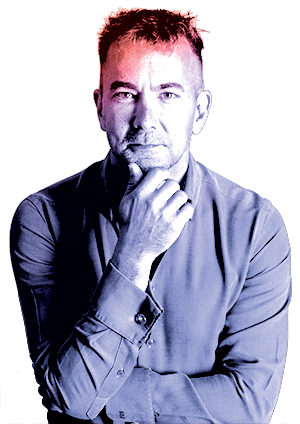
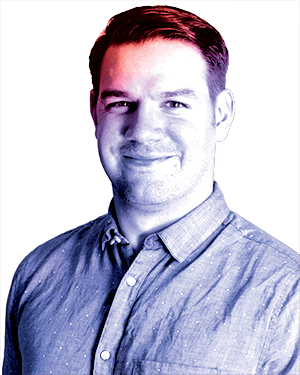

Read more Summit
Social innovation
Some are calling it the “me to we” generation. Today’s graduates don’t want to choose between chasing wealth and making the world a better place. In the world of social enterprise, Mount Royal University is distinctly positioned to contribute to a value-minded economy.
READ MORE

